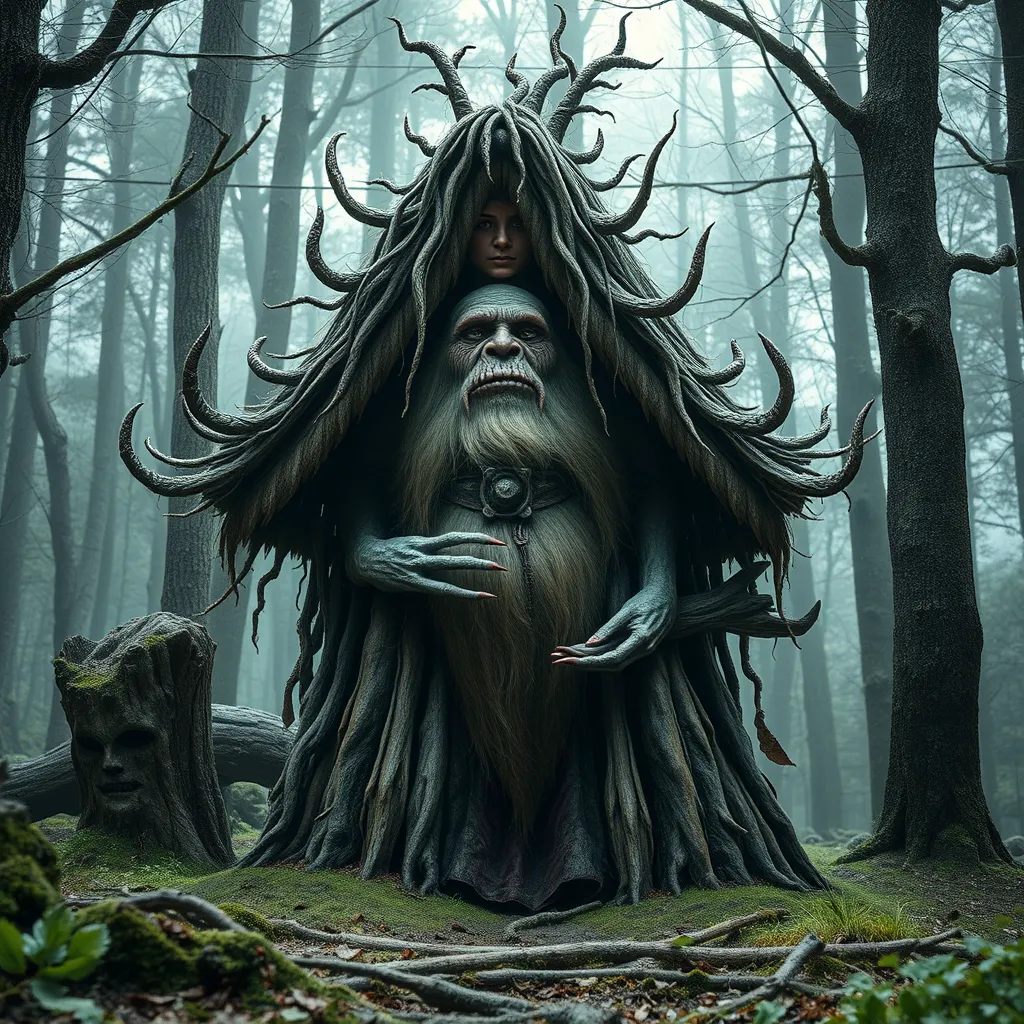The Dybbuk’s Song: A Musical Exploration of the Dybbuk’s Presence
I. Introduction to the Dybbuk
The Dybbuk is a fascinating figure in Jewish folklore, representing a dislocated soul that has not found peace and seeks to inhabit the body of a living person. The term “Dybbuk” comes from the Hebrew word “dibbuk,” which means “to cling.” It is a spirit believed to be the soul of a deceased person who, for various reasons, is unable or unwilling to ascend to the afterlife.
Historically, the Dybbuk emerged in the 16th century in the mystical teachings of Kabbalah, gaining prominence in Eastern European Jewish communities. It reflects deep-seated fears of spiritual unrest and the consequences of unresolved emotional and moral conflicts. The Dybbuk embodies themes of possession and the tension between the corporeal and the spiritual, making it a central figure in discussions about the afterlife, morality, and human emotions.
II. The Dybbuk’s Song: An Overview
The Dybbuk’s Song is a musical composition that delves into the themes surrounding this enigmatic spirit. Created by a collaboration of contemporary composers and musicians inspired by the Dybbuk folklore, the piece combines traditional melodies with modern influences to create a hauntingly beautiful experience.
The song’s structure typically includes a blend of verses and choruses that reflect the cyclical nature of the Dybbuk’s presence. Its style often incorporates elements of klezmer music, characterized by lively rhythms and poignant melodies, which serve to evoke the emotional depth of the Dybbuk’s narrative.
Within the context of Dybbuk folklore, the song serves as a significant cultural artifact, bridging the past with the present and inviting listeners to explore the complexities of identity, loss, and spirituality.
III. Musical Elements Reflecting the Dybbuk’s Nature
The Dybbuk’s Song employs several musical elements that reflect the essence of the Dybbuk itself:
- Use of traditional Jewish musical motifs: The song features scales and modes commonly found in Jewish music, such as the Phrygian mode, which is often associated with melancholy and longing.
- Instrumentation and its emotional impact: Instruments like the clarinet, violin, and accordion are prevalent, each contributing to the song’s emotional landscape. The clarinet, with its expressive range, often symbolizes the voice of the dybbuk.
- Rhythmic and melodic choices: The rhythms vary from slow, haunting passages to more frenetic sections, mirroring the struggle between the Dybbuk’s desire for connection and the chaos it creates.
IV. Lyrics and Themes in The Dybbuk’s Song
The lyrics of The Dybbuk’s Song offer a rich tapestry of meaning, exploring the intricate relationship between the living and the dead. They often reflect themes such as:
- Love: The longing for a lost loved one, expressing deep emotional ties that transcend death.
- Loss: The pain of separation and the desire to reconnect with the departed.
- Spiritual conflict: The struggle between the soul’s desire for peace and the turmoil caused by unresolved issues.
This interplay of themes connects directly to the story of the Dybbuk, which often involves a tragic love story where unresolved feelings lead to spiritual unrest. The lyrics serve as a narrative device, inviting listeners to engage with the emotional gravity of the Dybbuk’s plight.
V. Cultural and Historical Influences
The Dybbuk’s Song is deeply intertwined with the cultural and historical fabric of Jewish history:
- Historical events: The song echoes the struggles faced by Jewish communities during times of persecution, reflecting the broader narrative of survival and resilience.
- Eastern European musical traditions: The influence of Eastern European folk music is evident in the song’s melodies and rhythms, which echo the cultural heritage of the Jewish diaspora.
- Notable composers: Composers such as S. Ansky, who wrote the famous play “The Dybbuk,” have significantly contributed to the narrative, inspiring musicians to create works that resonate with the themes of the Dybbuk.
VI. The Dybbuk in Modern Interpretations
In recent years, the Dybbuk’s story has been reimagined and adapted across various artistic mediums:
- Contemporary adaptations: The Dybbuk has found its way into modern theater and music, where artists reinterpret its themes for a contemporary audience.
- Modern artists: Musicians from diverse backgrounds have drawn inspiration from the Dybbuk, infusing their work with its haunting narrative and emotional depth.
- Relevance today: The themes of love, loss, and spiritual conflict resonate strongly in today’s society, making the Dybbuk’s story timeless and relevant.
VII. Reception and Impact of The Dybbuk’s Song
The Dybbuk’s Song has garnered significant attention from audiences and critics alike:
- Audience response: Listeners often report a profound emotional connection to the piece, with many describing it as an evocative exploration of the human experience.
- Critical reviews: Critics praise the song for its masterful blend of traditional and contemporary elements, highlighting its ability to convey complex narratives through music.
- Influence on subsequent works: The Dybbuk’s Song has inspired other musical compositions, contributing to a broader dialogue about the intersection of music and folklore.
VIII. Conclusion
The Dybbuk’s Song stands as a powerful exploration of spiritual themes, reflecting the enduring human struggle with love, loss, and the complexities of existence. Through its evocative melodies and poignant lyrics, the song captures the deep emotional resonance of the Dybbuk’s narrative.
Ultimately, the enduring power of music lies in its ability to convey complex stories and emotions, allowing listeners to connect with experiences that transcend time and culture. The Dybbuk’s presence in cultural consciousness continues to thrive through music, reminding us of the profound connections we share with those who have come before us.



